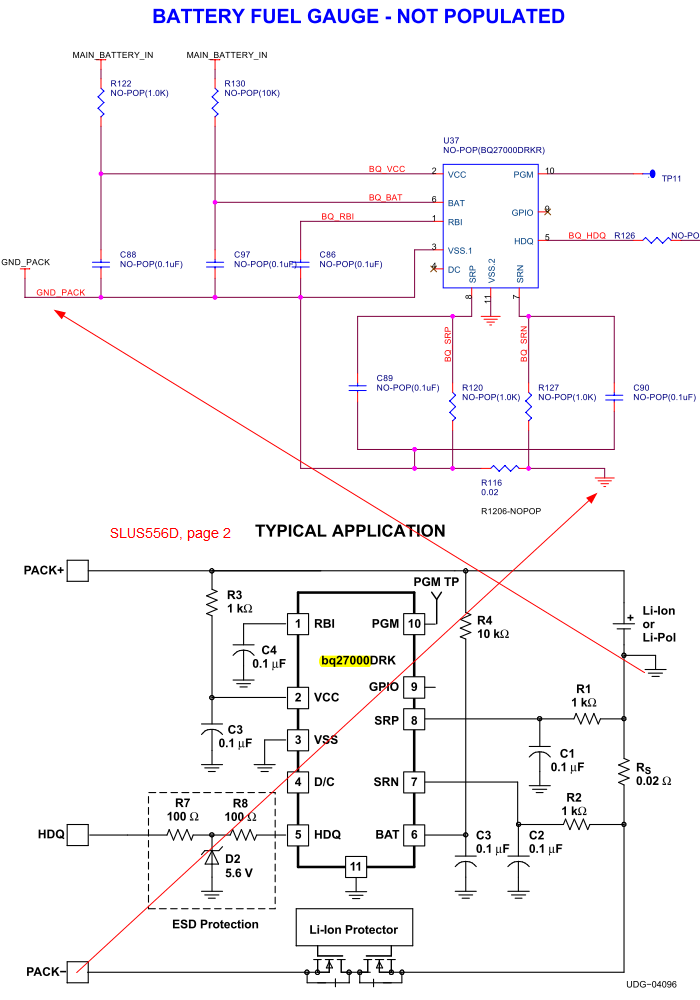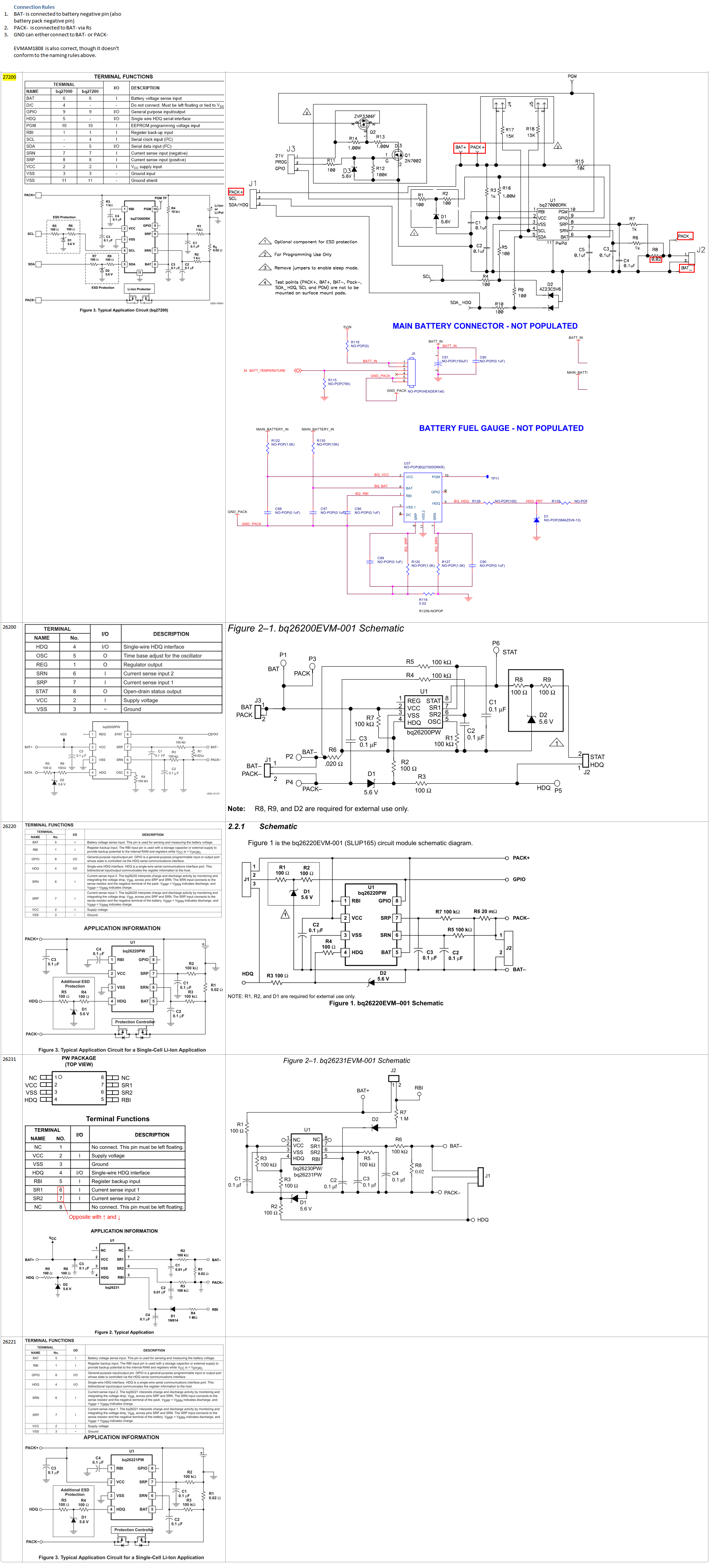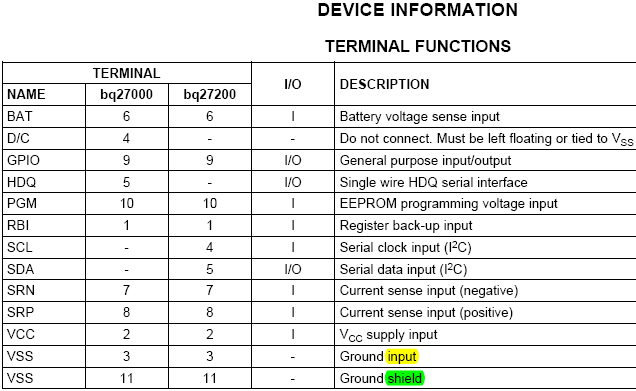Hi,
I would like to ask a question on bq27000.

In sheet 37 of EVMAM1808 schematics from TI partner SpectrumDigital, bq27000
- [SRP, 8, positive current sense input] is connected to GND_PACK
- [SRN, 7, negative current sense input] is connected to GND
This is the opposite from page 2 of bq27000 datasheet SLUS556D. Is this an error in EVMAM1808 schematics design here?
Zheng


